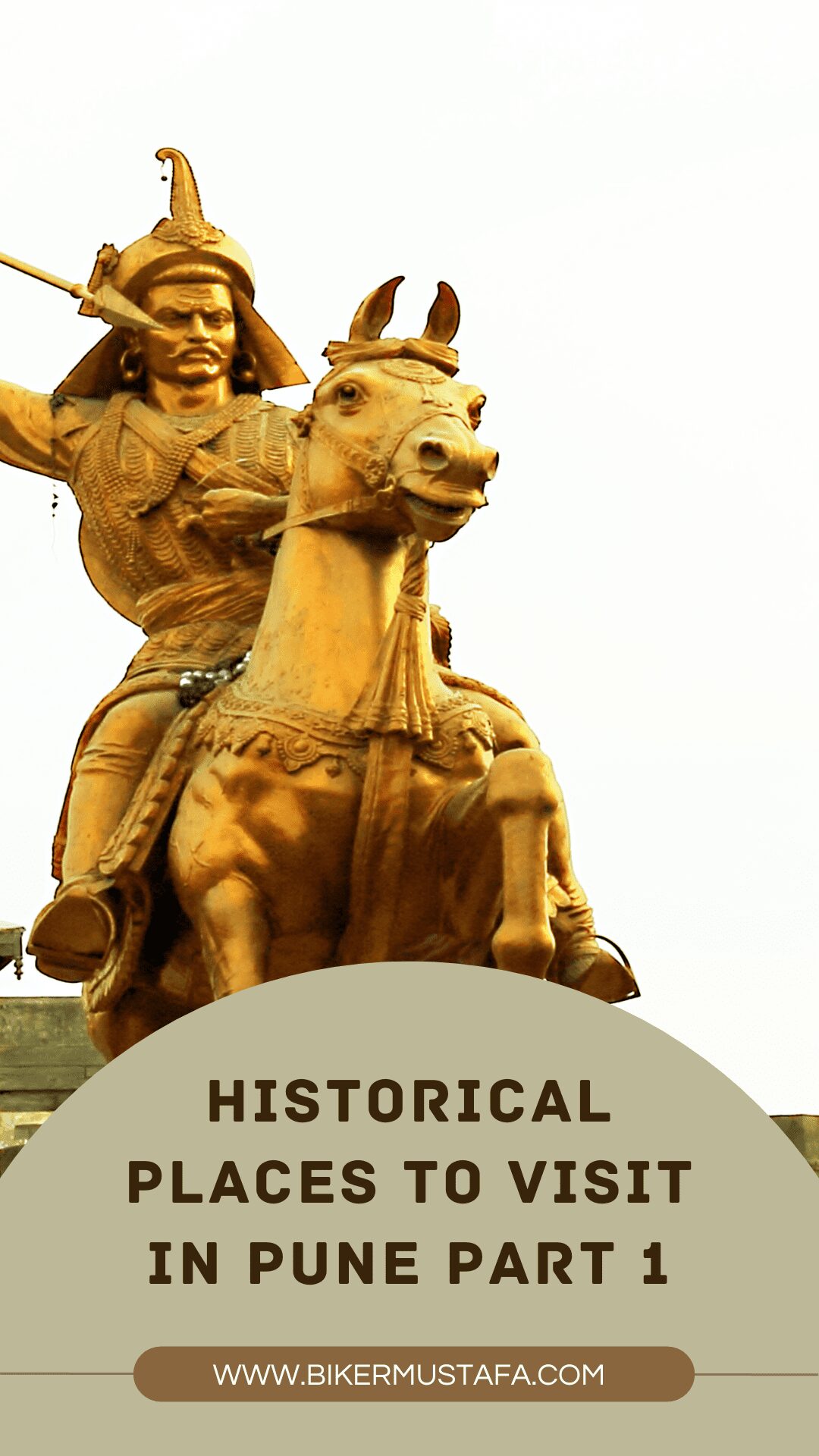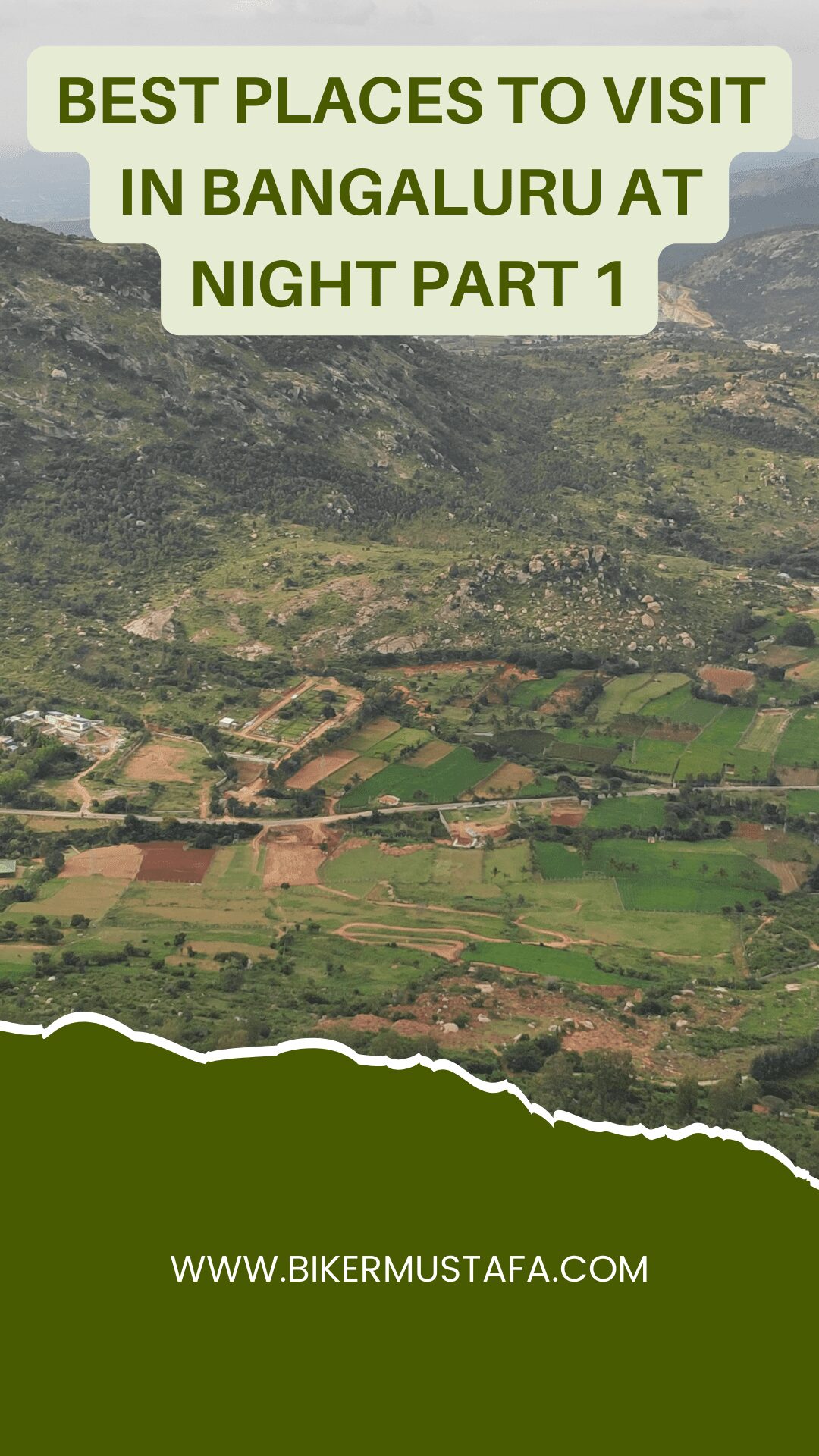Historical Places To Visit In Pune Part 1
Historical Places in Pune with Names
Fort Shivneri
A military structure from the 17th century, Shivneri Fort is situated close to Junnar in the Pune region of Maharashtra, India. Chhatrapati Shivaji Maharaj, the emperor and creator of the Maratha Empire was born there.
Since the first century AD, Buddhism has been recognized as the dominant religion in Shivneri. Its caves, rock-cut structures, and water system show that people have lived there since the first century AD. Shivneri received its name since the Yadavas of Devagiri owned it. The primary purpose of this fort was to protect the ancient trade route from Desh to the port city of Kalyan. Following the decline of the Delhi Sultanate in the fifteenth century, the Bahmani Sultanate ruled the region until the sixteenth century, when the Ahmadnagar Sultanate ruled it. Maloji Bhonsle, a Maratha ruler and the grandfather of Shivaji Bhosale, received Shivneri and Chakan in 1595 thanks to the Ahmadnagar Sultan Bahadur Nizam Shah. On February 19, 1630 (other sources say 1627), Shivaji was born at the fort and raised there. A modest temple to the goddess Shivai Devi, after whom Shivaji was named, can be found inside the fort. The fort was unbeatable, according to the English traveler Fraze, who visited it in 1673. He claimed that the fort had enough food to feed a thousand families for seven years. Following the Third Anglo-Maratha War in 1820, the fort was under British Rule.
In 2021, as part of the “Serial Nomination of Maratha Military Architecture in Maharashtra,” it was added to the list of potential UNESCO World Heritage monuments.

Architecture
Shivneri Fort is a triangular-shaped hill fort with an entrance on the southwestern side of the hill. A subsidiary entrance to the fort, known as the chain gate, where one must grip chains to climb up to the fort gate, is located in addition to the main gate. The fort has seven spiral well-defended gates that extend up to one mile (1.6 kilometers). Mud walls surround the fort. The fort’s three primary structures are the mosque, a mausoleum, and a prayer hall. Where executions occur, there is an overhang. Numerous gates and buildings guard this fort. One of the several entrances of the fort is Mana Daravaja. It is also known as the source of the tune.
A water feature known as “Badami Talav” is located in the middle of the fort, and Jijabai and a youthful Shiva are depicted in statues to the south of it. Two water springs in the fort, Ganges and Yamuna, are perennially wet. The Buddhist rock-cut caverns known as Lenyadri caves, one of Maharashtra’s Ashtavinayak temples, are located two kilometers from this fort. It has received the designation of a protected monument.
| TIMING | 24 HOURS |
| LOCATION | JUNNAR,PUNE |
| ENTRY FEE | ₹5 FOR ADULT & ₹1 FOR CHILD |
Palace of Aga Khan
In the Indian city of Pune, Sultan Muhammed Shah Aga Khan III constructed the Aga Khan Palace.
The Palace was a charitable gesture by the spiritual leader of the Nizari Ismaili Muslims, who intended to aid the underprivileged in Pune’s surrounding districts who had been severely affected by famine.
The Aga Khan Palace is an imposing structure. Since it was used as a prison for Mahatma Gandhi, his wife Kasturba Gandhi, his secretary Mahadev Desai, and Sarojini Naidu, the Palace has a special connection to the Indian freedom movement. In addition, Kasturba Gandhi and Mahadev Desai passed away there. The Archaeological Survey of India (ASI) designated the location as a monument of national significance in 2003. Because of its unique design, lush surroundings, and ideal lighting, Aga Khan Palace is a favorite destination for photographers for all types of photo shoots.
History and a museum
The Palace is essential historically. Following the start of the Quit India Movement, Mahatma Gandhi, his wife Kasturba Gandhi, and his secretary Mahadev Desai were imprisoned at the Palace from 9 August 1942 to 6 May 1944. Mahadev Desai and Kasturba Gandhi both passed away while held captive at the Palace, and their Samadhis are situated there. The memorials for Kasturba and Mahatma Gandhi are housed within the same complex close to the Mula River. According to legend, the Sultan engaged 1000 people to build the Palace, which took five years to complete, to provide for the area’s inhabitants who had been affected by the famine. It cost Rs. 12 lakhs to build. Seven acres of the original 13 acres are taken up by the Palace, which is built; the other three acres are a well-kept garden.
Aga Khan IV gave the Aga Khan Palace to the Indian people in 1969 as a tribute to Gandhi and his ideals. The castle now houses a Gandhi memorial where his ashes were interred. In 1974, the then-prime minister Indira Gandhi paid a visit to the location and pledged to provide a yearly maintenance budget of 200,000 (US$2,500). The price increased to 1 million rupees ($13,000) until the 1990s when an inefficient use of funding caused the Indian national monument to be neglected for many years. In July 1999, there was a demonstration about the Mahatma Gandhi statue’s deteriorating condition at the Pune train station. The current state has significantly improved.

The expansive lawns and Italian arches of the Aga Khan Palace. The structure has five halls. It has a total area of 19 acres (77,000 m2), of which the built-up area takes up 7 acres (28,000 m2). The Palace’s grandeur and charming architecture capture a spectator’s attention. This Palace was finished in 5 years for an estimated cost of US$15,000 (1.2 million). The first story has a construction area of 1080 m2, the second floor has a construction area of 1756 m2, and the bottom level has a total area of 1756 m2. This building’s 2.5-meter corridor that wraps around the entire structure is one of its unique features. The Parks and Gardens organization has cared for this castle since Prince Karim Aga Khan presented it to the Gandhi Smarak Samittee in 1972.
Mahatma Gandhi and other figures from the Indian liberation struggle are shown in various photographs and portraits in the Palace’s archives. The Gandhi National Memorial Society is based out of this Palace. A store selling khadi and other hand-loomed fabrics are also housed there.
| TIMING | 9:00 AM TO 5:30 PM |
| LOCATION | KALYANI NAGAR,PUNE |
| ENTRY FEE | ₹5 FOR ADULT & ₹2 FOR CHILD ₹100 FOR FOREIGNER |
Temple of Dagdusheth Halwai Ganpati
The Hindu deity Ganesh is honored in the Dagadusheth Halwai Ganapati temple, which is situated in Pune. Over a hundred thousand pilgrims visit the Temple annually. During the ten-day Ganeshotsav festival, celebrities and Maharashtra’s chief ministers visit the Temple as devotees. The primary Ganesh idol is covered by a $130,000 (or 10 million) insurance policy. The Temple has existed for 130 years. 2017 marked the 125th anniversary of its Ganapati.
History
Nandgaon-born (Shrivastav) trader and confectioner who now resides in Pune. He adopted that last name after becoming well-known for his halwai. Near the Datta Mandir in Pune, his original halwai business still operates under the name “Dagdusheth Halwai Sweets.” He eventually rose to prominence as a sweets vendor and a wealthy businessman. They lost their two sons (Ram and Lakshman) in a plague pandemic in the latter 1800s. When they passed away without leaving an heir, Dagdusheth later adopted Govindsheth, a 9-year-old nephew born in 1865. In Pune, Govindsheth was born in 1891. He installed a new Ganesh statue at Akra Maruti Chowk while leaving the other one in place. He constructed a second Ganesh idol, Jagoba Dada Talim, in the wrestling training facility since he was a kind and generous man. Dagdusheth, who was formerly a wrestling trainer, was the owner of this talim.
In honor of him, a section of Pune is known as Govind Halwai Chowk. Govindsheth coordinated all the events, including Ganesh Utsav, Datta Jayanti, and other celebrations, with the help of his mother. Laxmibai Dagdusheth Halwai Sansthan Datta Mandir Trust is the current name of the residence where they lived. The Laxmibai Dagdusheth halwai inspired the naming of Laxmi Road in Pune. In 1943, Govindsheth perished. The third Ganesh idol, which replaced the previous one, was established by his son Dattatray Govindsheth Halwai, born in 1926. The deity that is still visible in the Dagdusheth temple today is known as Navasacha Ganpati. It turned out to be a historical turning point for India.

The Temple is a stunning building with a lengthy history dating back over a century. The two marble sentinels, Jay and Vijay, immediately attract everyone’s attention. Since the building is so straightforward, everyone outside may observe the Temple’s activities, including the exquisite Ganesh statue. The Ganesh idol is one meter wide and 2.2 meters tall. It has around 40 kilograms of gold decorations. Ganesh’s worshippers present Him with gold and cash; with each gift, the Lord grows wealthy. Another aspect of the Temple is the mountains of coconuts that are donated to the deity. Attending the daily pooja, abhisheka, and Ganesh arti is worthwhile. During the Ganesh celebration, the Temple is beautifully lit. The Shrimant Dagdusheth Ganpati Trust oversees the preservation of the Temple. The Temple is close to the local market and the city’s center. The charity sponsors several cultural events, including music concerts, bhajans, and Atharvasheersh recitations.
They lived in the Shri Datta Mandir building in Budhwar Peth, Pune. Govindseth, a grandson of Dagduseth, was renowned for his compassion and kindness. His name, Govind Halwai Chowk, is well-known in Pune.
He afterward created the Halwai Ganapati Trust. Bal Gangadhar Tilak gave the Ganesh festival celebrations a public form during the British Raj to circumvent a law banning public gatherings.
| TIMING | 6:00 AM TO 11:00 PM |
| LOCATION | BUDHVAR PETH,PUNE |
| ENTRY FEE | FREE |
Chhatri Shinde
A memorial to the 18th-century Maratha military officer Mahadji Shinde, who led the Maratha army under the Peshwas from 1760 to 1780, can be seen in Pune, India’s Wanawadi neighborhood. It is a reminder of Maratha’s dominance and one of the most important landmarks in the city. The location of Mahadji Shinde’s cremation on February 12, 1794, is commemorated by a hall.
The only structure in the memorial complex in 1794 was a temple to Lord Shiva that Mahadji Shinde had constructed. His last rituals were carried out on the premises the same year he passed away. One of Mahadji’s descendants ordered the monument in his honor.
In 1910, a memorial called a samadhi was built outside the Shiva temple’s sanctum in honor of Mahadji Shinde, who was cremated there. The complex’s construction, along with the construction of the Mahadji Shinde memorial, was ordered by Maharaja Madho Rao Scindia of Gwalior (1876–1925). The monument was designed by the Bombay-based architectural firm Shapurjee N. Chandabhoy.
The Scindia of Gwalior is descended from Mahadji Shinde’s adopted son Daulat Rao Sindhia. The Shinde Devasthan Trust, located in Gwalior, looks after it.

Shinde Chattri’s Architecture
Architecture that embodies the Rajasthani architectural design. An excellent fusion of two distinct civilizations may be seen in the Anglo-Rajasthani architectural style. The building’s architectural magnificence is noticeable, and it has lovely carvings. It is a living example of a structure built following Vastu shastra principles. The memorial still has a beautiful and unique architectural design.
The Shiva temple’s steeple features intricate carvings and saintly images made of yellow stone, while the base and sanctum sanctorum is built from black stone. The Chhatri (hall) contains a gallery in addition to carvings and paintings. English-style colored window panes are employed in the windows. The Shinde family’s portraits and artworks are tastefully displayed around the hall.
| TIMING | 6:00 AM TO 9:00 PM |
| LOCATION | WANAWADI,PUNE |
| ENTRY FEE | ₹2 PER PERSON |
Sinhagad
A historic hill fortress called Sinhagad is situated 49 kilometers southwest of Pune. The Fort, formerly known as Kondhana, had witnessed numerous conflicts, most notably the Battle of Sinhagad in 1670.
Due to its extremely steep slope, the Sinhagad (Lion’s Fort) was strategically constructed to offer natural protection. Only at strategic locations were walls and bastions built. The Kalyan Darwaza and Pune Darwaza, located at the Fort’s southeast and northeast ends, respectively, are its two entrance gates. The Fort was strategically situated in the middle of a group of other forts belonging to the Maratha Empire, including Rajgad Fort, Purandar Fort, and Torna Fort.
Geography
The Fort is perched on a remote cliff of the Bhuleswar range in the Sahyadri Mountains, at a height of 1,312 meters above mean sea level and 760 meters above the ground.
Tourism and Culture
A monument honoring Tanaji Malusare perched atop Sinhgad Fort. At the Battle of Sinhgad, this gallant Maratha Sardar led his soldiers to a resounding victory despite being significantly outnumbered by the Mughal Army (1670 CE)
Many Pune locals like taking weekend trips to the Fort, including trekkers who may reach the summit of the Fort from the base of the Sinhagad hamlet. The excursion entails a 2.7 km (1.6 miles) one-way walk during which the hiker accumulates around 600 m (1950 feet) in elevation.

The once-vast structure is now mostly in ruins. Rajaram I’s mausoleum and a memorial to Tanaji are also located in the Fort. The historical gates, a brewery, a temple dedicated to the goddess Kali, the military stables, and the Hanuman statue are all visible to visitors. The original Tanaji Malusare memorial was discovered by restoration works at Sinhagad Fort in February 2019. The 350-year-old stone building was buried beneath cement, concrete, and layers of oil paint.
The Sinhagad Fort was crucial to India’s war for independence. The Fort served as a summer hideaway for Bal Gangadhar Tilak, also referred to as “The Father of Indian Unrest.” After returning from South Africa, Mahatma Gandhi met Tilak in a historic encounter. At the front of the home is a bust of him.
A television tower for transmitting local TV signals is also located inside the Fort. Currently, smoking, drinking, and eating non-vegetarian cuisine are prohibited on the Fort.
Bus number 50, conducted by Pune Mahanagar Parivahan Mahamandal Limited (PMPML), connects Shaniwar Wada with the foothills of Sinhagad (Sinhagad Payatha). It takes an hour to complete the ascending route from either side of the Fort. There are also shared taxi services that go to both the Fort’s summit and bottom.
| TIMING | 6:00 AM TO 6:00 PM |
| LOCATION | THOPTEWADI,PUNE |
| ENTRY FEE | FREE |
Parvati Hill
A hill in Pune, India, is known as Parvati Hill. It reaches 2,100 feet (640 meters) above sea level. One of Pune’s most picturesque destinations, the Parvati Temple, is perched atop the hill. The Peshwa dynasty oversaw the temple’s construction, the city of Pune’s oldest heritage building. Parvati Hill is an observation point where guests can get a birds-eye perspective of Pune. It is Pune’s second-highest peak (after Vetal Hill). The hill features 108 steps that go up to the top, where the temple is located (108 is regarded as a holy number in Hinduism). The Patil named Taware owned the hill. Peshwa bought the hill so that he might erect a Shiva shrine. The Devi temple was thought to belong to Taware’s kulswami, whose Angara was able to heal Kashibai, the mother of Peshwa Balaji Baji Rao, of a leg problem. The Peshwa then constructed a temple complex there.
Blackstone makes up the Devdeveshwara main temple. Under Balaji Baji Rao, it was finished in 1749, and in 1760 the temple’s gold pinnacle was added. Vishnu, Kartikeya, Vitthal, and Rukmini are the subjects of other temples.
Five temples can be found atop Parvati Hill:
- Temple of Devdeveshwar (Shiva and Parvati).
- Temple of Kartikeya.
- Shiva Temple.
- Temple of Vitthal.
- Temple to Ram.
- Along with other Surya (the sun) temples and Bhawani mandir, The temples are open from 5:00 am till 10:00 night.

Other buildings
Nearby is also the Peshwa Museum there, in addition to the temple. The Peshwas’ possessions, including weapons, coins, utensils, wooden furniture, vehicles (palanquins), and presents, are shown in the museum.
The location of Balaji Baji Rao’s samadhi, where he passed away, is also nearby. Half of Pune’s population receives water from the Parvati water tank.
| TIMING | 5:00 AM TO 8:00 PM |
| LOCATION | PARVATI HILL,PUNE |
| ENTRY FEE | FREE |
National Museum of War
A national memorial honoring and remembering Indian military personnel who took part in wars throughout India’s independence is known as the National War Memorial. On the memorial walls are written gold lettering the names of military soldiers who died in the wars with Pakistan and China, the Goa War of 1961, Operation Pawan, and other operations like Operation Rakshak.
This monument, which spans 40 acres of land and is close to India Gate in New Delhi, was constructed by the Indian government around an existing chhatri (canopy). The memorial wall blends in with the surroundings and is flush with the ground. It was finished in January 2019 and unveiled on February 25, 2019, during a ceremony at the monument where Prime Minister of India Narendra Modi ignited the eternal flame of the Amar Jawan Jyoti (Flames of Eternal Soldiers) at the Amar Chakra beneath the central obelisk of the monument in the presence of the Chief of Defence Staff (CDS) of India and the three Chiefs of Staff of the Indian Armed Forces.
The national war memorial used to be the previous Amar Jawan Jyoti, located near India Gate. In response to Prime Minister Indira Gandhi’s request, it was built quickly after the Indo-Pakistani War of 1971 to be dedicated to the war’s martyrs on January 26, 1972. The flame from this location was combined with the flame at the new National War Memorial on January 21, 2022, by Air Marshal Balabhadhra Radha Krishna, the Integrated Defence Staff chief.
Aesthetics and Design
Within the C-Hexagon are the India Gate and National War Memorial (NWM) complexes, as well as holographic statues of Amar Jawan Jyoti and Netaji. The NWM rings come together to form a chakravya.
The outcome of a worldwide design contest was revealed in early April 2017. WeBe Design Lab, an architectural firm based in Chennai, was selected to conceptualize the architectural design and oversee the project’s construction once their proposal was selected as the winner. Yogesh Chandrahasan, the chief architect at WeBe Design Lab, was motivated by the idea of building a memorial rather than a location to lament sacrifices.
The National War Memorial and Museum was listed as a Special Project and a Special Projects Division under the Chief Administrative Officer (Ministry of Defence), and the Military Engineer Services was given the responsibility for its “timely accomplishment.”

Concept
The Memorial comprises four concentric circles and an obelisk in the center, beneath which a flame known as the “everlasting flame” symbolizes the soldier’s immortality burns (Amar jawan). The circumferential shapes resemble the Chakravyuh, a traditional Indian battle formation. Are referred to as, from most inner to most outer:
The name of this memorial structure, the Amar Chakra (Circle of Immortality), comes from the Eternal Flame (Amar Jawan Jyoti), which is perpetually blazing beneath the great obelisk in the monument’s center. The flame represents the nation’s commitment never to forget the dead warriors’ sacrifices and the immortality of their spirits.
Veerta Chakra (Circle of Bravery): The second circle represents the bravery of Indian soldiers through a covered gallery that displays six murals made of bronze that show the Indian Armed Forces participating in heroic battle activities. Battle of Gangasagar, Longewala, Tithwal, Rizangla, Operation Meghdoot and Operation Trident are the conflicts highlighted here.
The Tyagi Chakra, also known as the “Circle of Sacrifice,” represents the ancient military structure known as the “Chakravyuh.” The walls are covered in granite tablets, each dedicated to a soldier who has given the ultimate sacrifice on the battlefield and is inscribed with his name and rank information in gold.
Rakshak Chakra (Circle of Protection): Each tree in the outermost circle of the Rakshak Chakra represents a soldier who continuously defends the nation’s territorial integrity, assuring the residents of the country that they are safe from any threats.
The busts of all 21 recipients of the Param Vir Chakra, India’s highest military honor, are kept in the Param Yodha Sthal.
In the vicinity of Princess Park, where the Memorial is located, a National War Museum will be built and connected to it via a tunnel below ground. North of India Gate, on 14 acres, lies The Princess Park, which features World War II-era buildings that resemble barracks. It has been family housing for mid-level military personnel stationed at the Service Headquarters in New Delhi since 1947. The planned National War Museum will include a metro connection. The estimated cost of building the War Memorial and Museum is 500 crore (US$70 million).
The National War Museum is located in an area of around 10 acres, and the Central Public Works Department released the tender for the appointment of a consultant in July 2020. CP Kukreja Architects and Suresh Goel & Associates are the two companies that have been shortlisted.
| TIMING | 9:00 AM TO 5:30 PM |
| LOCATION | GHORPADI,PUNE |
| ENTRY FEE | FREE |
People Also Ask:
How many historical places are there in Pune?
- Fort Shivneri
- Palace of Aga Khan
- Temple of Dagdusheth Halwai Ganpati
- Chhatri Shinde
- Sinhagad
- Parvati Hill
- National Museum of War
- Palace of Shaniwar Wada
- Temple of Chaturshringi
- Temple of Pataleshwar Cave
- Museum Raja Dinkar Kelkar
- Fort Lohagarh
- Lal Mahal
- Shivaji Bridge
- Vishrambaug Wada
- Rasalgad
- Tribal Museum
- Dehu Gatha temple
- Nana Wada
- Mahatma Phule Museum
What is the famous monuments in Pune?
Aga Khan Palace, Shaniwar Wada, Sinhagad, Lohagad, Shivaji, Chhatri, Pataleshwar Cave Temple, Mahatma Phule Museum, Dagdusheth Halwai Ganapati Temple, Nana, Bhide, and numerous other structures.
Which is the famous thing in Pune?
One of Pune’s most well-known sites, Shinde Chhatri, is a monument to the courage and bravery of the Marathas. The Chhatri is dedicated to Mahadji Shinde, the Peshwas’ chief commander and the man responsible for creating the Gwalior empire.
Is Pune a heritage city?
Pune is a prime example of the Marathi culture and ethos, which strongly emphasizes theatre, arts, and education. Both the poet-saint Tukaram (born in Dehu) and Jnaneshvara (born in Alandi), the creator of the renowned commentary “Jnaneshwari” on the “Bhagavad Gita,” were born there.
Why is Pune historical?
It was the hub of Maratha rulers and subsequently, the British. Hence, you will find many places that have marks of their rule in Pune. The city is home to hundreds of monuments and historical structures, some of which are thousands of years old, and they include forts, palaces, buildings and even temples.
Recommended Articles:





2 thoughts on “Historical Places To Visit In Pune Part 1”